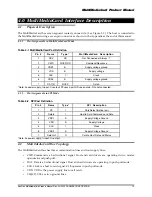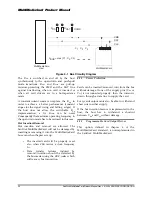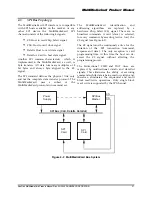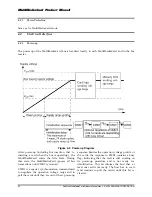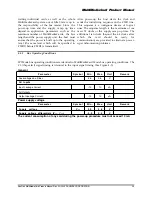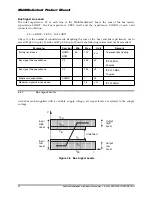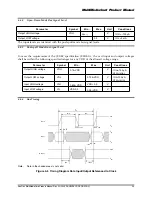
MultiMediaCard Product Manual
10
SanDisk MultiMediaCard Product Manual Rev. 2 © 2000 SANDISK CORPORATION
1.5.3
Endurance
SanDisk MultiMediaCards have an endurance
specification for each sector of 300,000 writes
(reading a logical sector is unlimited). This is far
beyond what is needed in nearly all applications
of MultiMediaCards. Even very heavy use of the
MultiMediaCard in cellular phones, personal
communicators, pagers and voice recorders will use
only a fraction of the total endurance over the
typical device’s five year lifetime. For instance,
it would take over 34 years to wear out an area on
the MultiMediaCard on which a file of any size
(from 512 bytes to capacity) was rewritten 3 times
per hour, 8 hours a day, 365 days per year.
With typical applications the endurance limit is
not of any practical concern to the vast majority of
users.
1.5.4
Wear Leveling
SanDisk MultiMediaCards do not require or
perform a Wear Level operation.
1.5.5
Using the Erase Command
The Erase (sector or group) command provides the
capability to substantially increase the write
performance of the MultiMediaCard. Once a
sector has been erased using the Erase command, a
write to that sector will be much faster. This is
because a normal write operation includes a
separate sector erase prior to write.
1.5.6
Automatic Sleep Mode
A unique feature of the SanDisk MultiMediaCard
(and other SanDisk products) is automatic
entrance and exit from sleep mode. Upon
completion of an operation, the MultiMediaCard
will enter the sleep mode to conserve power if no
further commands are received within 5 msec. The
host does not have to take any action for this to
occur. In most systems, the MultiMediaCard is in
sleep mode except when the host is accessing i t ,
thus conserving power.
When the host is ready to access the
MultiMediaCard and it is in sleep mode, any
command issued to the MultiMediaCard will
cause it to exit sleep and respond.
1.5.7
Hot Insertion
Support for hot insertion will be required on the
host but will be supported through the connector.
Connector manufacturers will provide connectors
that have power pins long enough to be powered
before contact is made with the other pins. Please
see connector data sheets for more details. This
approach is similar to that used in PCMCIA to
allow for hot insertion. This applies to both
MultiMediaCard and SPI modes.
1.5.8
MultiMediaCard Mode
1.5.8.1
MultiMediaCard Standard
Compliance
The MultiMediaCard is fully compliant with
MultiMediaCard Standard Specification V1.4.
The structure of the Card Specific Data (CSD)
register is compliant with CSD structure V1.4.
1.5.8.2
Negotiating Operation Conditions
The MultiMediaCard supports the operation
condition verification sequence defined in the
MultiMediaCard standard specifications. Should
the MultiMediaCard host define an operating
voltage range which is not supported by the
MultiMediaCard it will put itself in an inactive
state and ignore any bus communication. The only
way to get the card out of the inactive state is by
powering it down and up again.
In Addition the host can explicitly send the card
to the inactive state by using the
GO_INACTIVE_STATE command.



















